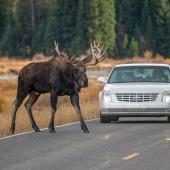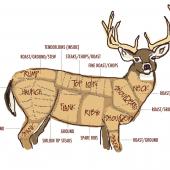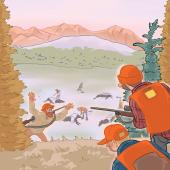Elk Infirmity
Understanding brucellosis.
Increasing numbers of elk in southwest Montana are testing positive for brucellosis (a bacterial infection responsible for aborted pregnancies and other harmful symptoms), and FWP has been conducting a multi-year study to help understand why. State Lab Supervisor Neil Anderson is leading the research, and he sat down with me to hash out the basics.
Andrea Jones: What is the basic goal of this study?
Neil Anderson: Delineating the geographical distribution of brucellosis in elk. We’re trying to determine where it is, and where it’s not, and that will influence management—not only for Fish, Wildlife & Parks, but also for the Department of Livestock. They will use the information to set where the boundaries are for their Designated Surveillance Area.
AJ: So how does the study work?
NA: We test about 100 elk each year depending on the availability of the animals. We used to rely on hunter-harvested samples, but we weren’t getting enough samples from the areas needed. So we capture 100, and that gives us more confidence in our findings as to the presence of brucellosis.
One part of the study is surveillance, and the other part is looking at how the disease functions in elk. We put implants in elk that test positive. This enables us to monitor birth activities, including whether they abort or carry to full term, and whether they are shedding the bacteria on the landscape. We also collect and culture tissue samples. That helps us understand the risk to livestock and the risk of elk-to-elk transmission. The third part is fitting about 30 elk with radio collars so we can get a better idea of their movement.
AJ: How long will the study continue?
NA: The study was planned for five years, and we’re coming up on our fifth year. After this, we’ll take a step back and reevaluate.
AJ: What have been your takeaways so far in this study?
NA: We’re starting to see prevalence percentages in the teens or higher, whereas they were typically at three percent or less in the mid-‘90s. We’ve seen brucellosis expand its distribution: either we’ve achieved better sampling of animals, the distribution of animals has changed, the disease has moved into new populations, or some combination of those factors.
AJ: What’s next?
NA: We’re looking at moving away from the reproductive part of this study and starting to focus more on risk management.
AJ: Is there something more the public should know at this point?
NA: We need to learn more about this disease. The presence of this disease reduces landowner tolerance for elk on their property. Population goals or objectives are based, in part, on that tolerance.













